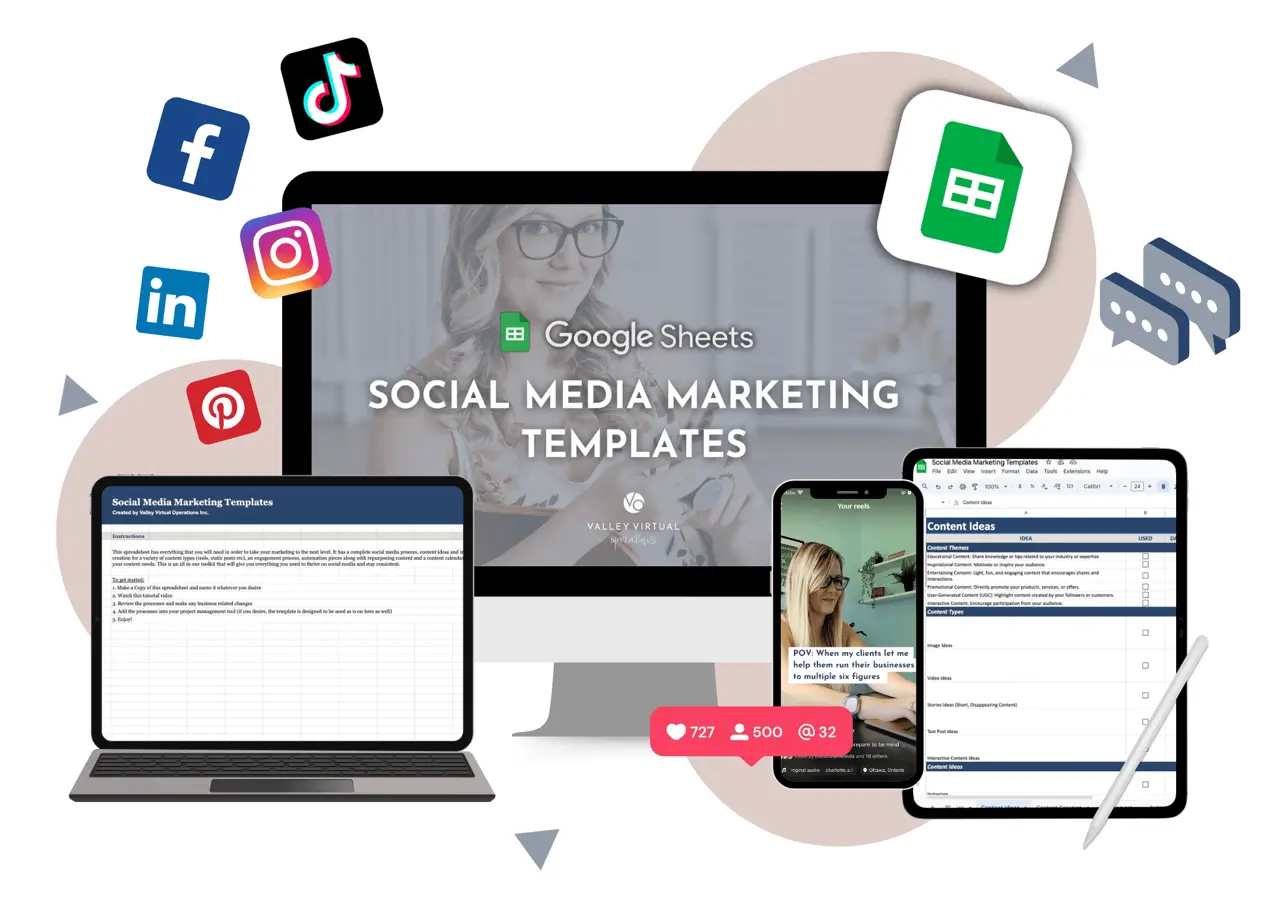I’ve talked about SOPs before and how important they are to your business. Now, I want to talk about organizing your collection.
What are SOPs?
Standard Operating Procedures (SOPs) are the actions or steps needed to reach a goal. They are the heart of your business because they promote consistency, efficiency, and productivity.
Most, if not all, businesses have SOPs in their business to help them operate correctly, keep everyone on the same page, and grow their business.
However, having a pile of SOPs can be overwhelming if you can’t find the one you need.
That’s where your library comes in.
What is an SOP Library?
Your SOP library is a way to organize your SOPs so you (and your team) can easily find the SOP you need.
Not only will a library help you organize your business, but it’ll also promote productivity and cut down the time wasted searching through every SOP in the business.
How to Create an SOP Library
Creating a SOP library is one of the simplest things you can do for your business, and you’ll see the benefits almost immediately. All you need to do is:
- Find somewhere to store it
- Gather your existing SOPs
- Identify missing SOPs
- Update the library regularly
With these four steps, you’ll soon have a dynamic SOP library. Here’s how.
Step 1: Find somewhere to store it
Before you can create a library, you need somewhere to store it.
The easiest, cheapest way is to create a Google (or Excel) sheet, add your labels and links, and store the actual documents in the cloud or Google Drive. That way, you can organize it however you like and search for specific SOPs. Plus, sheets are versatile, so updating or exporting them won’t slow you down.
You could also create a Word or Google document, but they offer fewer organization options than a sheet, and searching for specific items isn’t as streamlined.
If you’re more of a visual or audio person, you could create a Loom video outlining where everything is. However, that might get complicated if your team needs something quick and doesn’t have time to watch a 20-minute video to find it.
However, if you want a library with storage, versatility, and other perks, you could store your SOP library within your project management system.
I recommend ClickUp for library storage and project management, and their free plan provides everything you need to organize and run your business from the ground up.
That way, everything is in-house and ready to go.
Step 2: Gather your existing SOPs
Now, for the fun part. Go through your business and gather all the SOPs you already have.
Then, you can organize them by category or topic, check for updates, remove unnecessary ones, and move them into your new library system.
Step 3: Look for missing SOPs
Once you’ve gathered your existing SOPs, it’ll be easier to see what’s missing.
Create a category in your library for “missing” or “to write” SOPs and add the ones you need. However, I know that creating multiple SOPs can be overwhelming. One of the ways I combat this is by writing them as I’m doing the task.
For example, pretend you need an SOP for your onboarding process. The next time you onboard a client, write down the steps as you go. Then, turn that list into an SOP whenever you can.
Easy peasy!
Step 4: Update your library regularly
Once your SOP library is complete, set a recurring task in your project management system to check it regularly.
Every quarter or so, visit your SOP library and check the links, make updates, add new SOPs, and ensure it’s working as it should.
Keeping your library updated like this will save you time and effort in the long run, avoid potential issues, and boost productivity.
Don’t forget it.
Final Thoughts
Not only will an SOP library keep your business organized, but it’ll help your team work more efficiently as well.
Plus, if you use a project management system (like ClickUp) to host your library, you can link tasks to relevant SOPs, give your team direct access to the documents they need, and cut your stress by keeping everything in-house.
Either way, creating an SOP library will boost the efficiency of your business and help you fill in the gaps in your SOPs- which, in turn, can help you grow.







